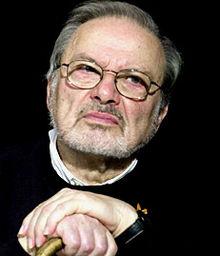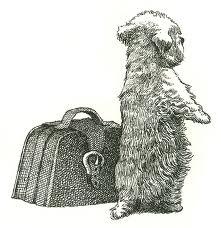 Yesterday, in the Grace Rainey Rogers Auditorium at Manhattan's Metropolitan Museum of Art, friends and colleagues honored Maurice Sendak, who died on May 8 at the age of 83. The tribute opened with a clip from the film Tell Them Anything You Want, directed by Lance Bangs and Spike Jonze. In it, Sendak spoke about what set him apart from other artists: "I was more honest than anybody."
Yesterday, in the Grace Rainey Rogers Auditorium at Manhattan's Metropolitan Museum of Art, friends and colleagues honored Maurice Sendak, who died on May 8 at the age of 83. The tribute opened with a clip from the film Tell Them Anything You Want, directed by Lance Bangs and Spike Jonze. In it, Sendak spoke about what set him apart from other artists: "I was more honest than anybody."
Michael di Capua was an editorial assistant when he discovered Maurice Sendak on the shelves of the old Scribners bookstore on Fifth Avenue. He pulled out the volume Schoolmaster Whackwell's Wonderful Sons by Clemens Brentano (Random House, 1962) and noticed the artwork by a fellow named Sendak. Di Capua wrote to him, suggesting he do a collection of the Brothers Grimm. Soon after, di Capua received a phone call in his cubicle: "Sendak calling," said the voice on the other end. They sat down to sandwiches and iced tea "at a little dump half a block from Sendak's Ninth Street apartment," di Capua recalled, and discovered their mutual love of Verdi, Mahler and Mozart. That was in October 1962. The editorial assistant was 24; Sendak was 34. During the course of their half-century working together, they finally did publish that collection of Grimm tales as two small volumes in a slipcase in 1973.
Maurice Sendak contacted Art Spiegelman after the publication of Maus. Spiegelman proposed to the New Yorker's David Remnick a piece with Sendak around the time of the publication of his We're All in the Dumps with Jack and Guy. He'd heard Sendak was "a kvetch, a crank and a hermit." Instead, Spiegelman found a "kindred spirit." After hours of discussion, Spiegelman took the lines he liked most ("because comics is the art of compression") and asked Sendak, "Want to draw it with me?" They worked together at the drawing table in Spiegelman's studio. They'd start out drawing to Sendak's Mozart then move to Spiegelman's 1920s jazz recordings (Sendak requested a playlist afterward, according to Spiegelman). Their joint comic strip appeared in the New Yorker on September 27, 1993. Spiegelman said "the shadow of the Hitler years were on my shoulder and his." When he first saw In the Night Kitchen, Spiegelman believed that he saw in that Oliver Hardy character, "the transmutation of Hitler's mustache," and also of a child being baked into a pie. Sendak's work, Spiegelman said, "transcends good and evil."
Tony Kushner, who put together the memorial with Kyle Warren, began his remarks by commenting on the scene in the film about the very small group Sendak said he'd have missed if he hadn't been born. Kushner speculated that others, like him, might have felt "a small twinge of annoyance" at those he'd left out. "Even Herman [Sendak's German shepherd] walked out of the frame when he said Jennie was the love of his life." Jennie, the star of Higgledy Piggledy Pop: Or There Must Be More to Life, appeared "in every book I did for as long as she lived," Sendak declared. Kushner said Sendak frequently tested his friends' loyalty, but "always believed in love whether or not he believed in its constancy." He needed to be alone to work but he also loved companionship.
As the 11-year-old girl next door when Sendak and Glynn moved to their home in Connecticut, Lynn Caponera started out taking care of their dogs. She ended up taking care of Sendak. Caponera said that when Sendak first moved in, "I didn't know what he did for a living, I just knew he told the best stories." They'd see a rabbit in the woods, then head to his library where he would pull down a volume of Beatrix Potter to demonstrate that "the rabbit on paper was as alive as the one in the woods."
 Caponera closed with a letter "from his favorite book":
Caponera closed with a letter "from his favorite book":
Hello
As you probably noticed, I went away forever. I am very experienced now and very famous. I am even a star.... I get plenty to drink, too, so don't worry.... If you ever come this way, look for me. Jennie

